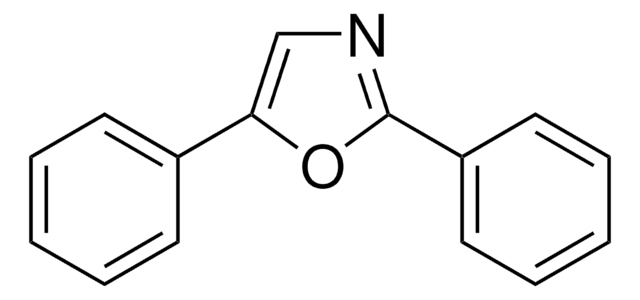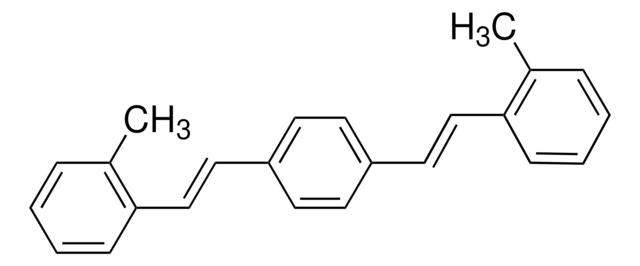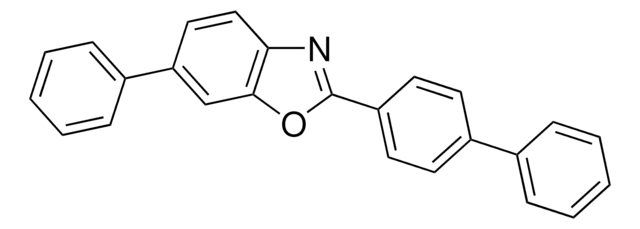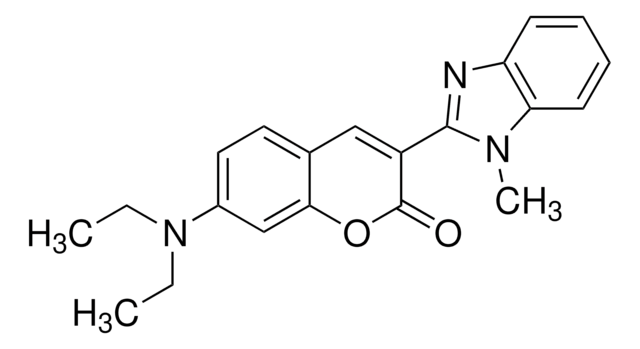P3754
1,4-Bis(5-phenyl-2-oxazolyl)benzene
BioReagent, suitable for scintillation
Sinônimo(s):
1,4-Bis(5-phenyl-2-oxazolyl)benzene, 2,2′-p-Phenylene-bis(5-phenyloxazole), Di(phenyl-5-oxazolyl-2)-1,4-benzene, POPOP
About This Item
Produtos recomendados
linha de produto
BioReagent
forma
powder
pf
242-246 °C (lit.)
adequação
suitable for scintillation
cadeia de caracteres SMILES
c1ccc(cc1)-c2cnc(o2)-c3ccc(cc3)-c4ncc(o4)-c5ccccc5
InChI
1S/C24H16N2O2/c1-3-7-17(8-4-1)21-15-25-23(27-21)19-11-13-20(14-12-19)24-26-16-22(28-24)18-9-5-2-6-10-18/h1-16H
chave InChI
MASVCBBIUQRUKL-UHFFFAOYSA-N
Procurando produtos similares? Visita Guia de comparação de produtos
Descrição geral
Aplicação
Características e benefícios
- High fluorescence quantum yield.
- High molar absorptivity.
- Large Stokes Shift.
- High Photostability in most organic solvents.
produto relacionado
Palavra indicadora
Warning
Frases de perigo
Declarações de precaução
Classificações de perigo
Acute Tox. 4 Oral - Eye Irrit. 2
Código de classe de armazenamento
11 - Combustible Solids
Classe de risco de água (WGK)
WGK 2
Ponto de fulgor (°F)
Not applicable
Ponto de fulgor (°C)
Not applicable
Equipamento de proteção individual
dust mask type N95 (US), Eyeshields, Gloves
Certificados de análise (COA)
Busque Certificados de análise (COA) digitando o Número do Lote do produto. Os números de lote e remessa podem ser encontrados no rótulo de um produto após a palavra “Lot” ou “Batch”.
Já possui este produto?
Encontre a documentação dos produtos que você adquiriu recentemente na biblioteca de documentos.
Os clientes também visualizaram
Nossa equipe de cientistas tem experiência em todas as áreas de pesquisa, incluindo Life Sciences, ciência de materiais, síntese química, cromatografia, química analítica e muitas outras.
Entre em contato com a assistência técnica








